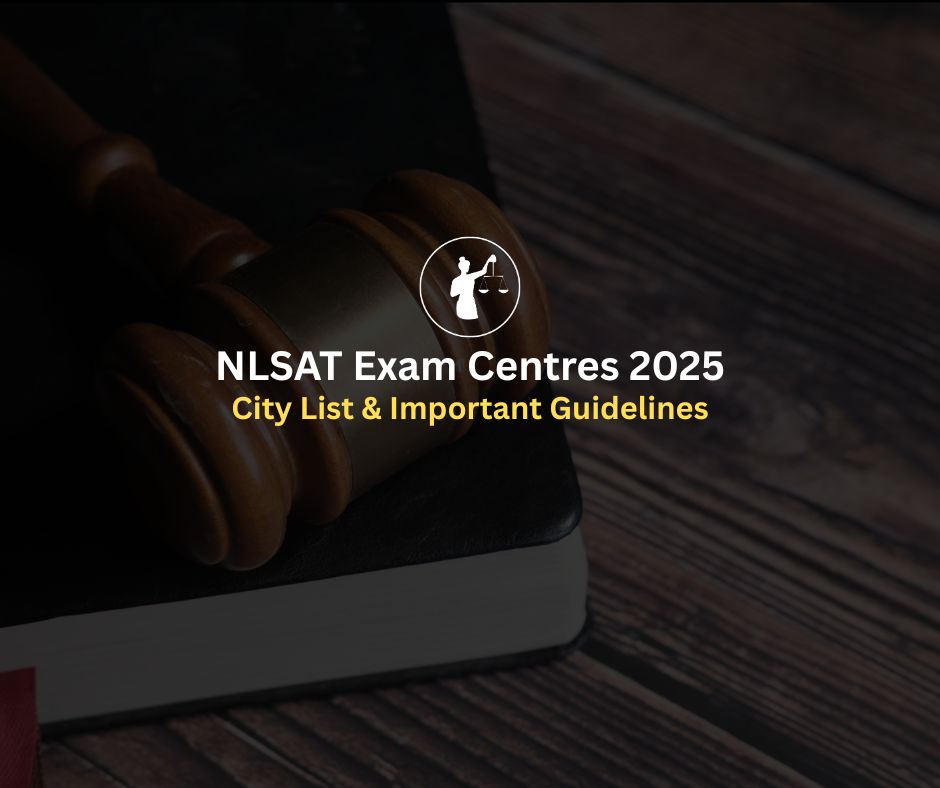
Staying consistent through the long CLAT preparation cycle is harder than most aspirants expect. The pressure to outperform thousands, the constant scoreboard mentality, and the fear of burnout all influence performance more than syllabus coverage itself. As competition gets more intense each year, the real differentiator has become mindset management, not just studying harder. This is where CLAT 2026 motivation, emotional regulation, and practical CLAT stress management techniques shape outcomes as strongly as test-taking skill.
This comprehensive guide explains the psychology behind CLAT-related stress, how to stay disciplined for months, research-backed motivation systems, and the most reliable CLAT 2026 preparation tips for building consistency and confidence.
Best CLAT Coaching Online 2026–2027 by NLTI
CLAT is not a memory-heavy exam, it’s a performance exam built on comprehension, logic, and accuracy under time pressure. Mental fatigue reduces reading efficiency, increases silly mistakes, and lowers retention. When consistency drops, accuracy collapses first, then confidence.
A stable mindset allows aspirants to maintain discipline, absorb complex content, and perform more predictively in mocks. In other words, CLAT 2026 motivation and emotional control directly influence percentile movement.
Students who maintain emotional stability show:
Higher accuracy under pressure
Better passage comprehension
Stronger mock-test progression
Lower burnout rate
Healthy confidence cycles
This makes emotional regulation a core component of CLAT 2026 preparation tips, not an optional add-on.
Read More: Live Classes vs Recorded Modules: Best for CLAT Prep
Many aspirants assume stress comes from syllabus overload, but psychological triggers play a deeper role. Effective CLAT stress management begins by understanding what is causing mental friction.
1. Competitive pressure
Seeing high-scoring peers or inflated expectations leads to self-comparison cycles.
2. Mock score fluctuations
Inconsistent scores create anxiety even for well-prepared students.
3. Family and social expectations
External pressure amplifies stress during long preparation windows.
4. Syllabus length and time crunch
Unfinished targets create guilt loops, lowering motivation.
5. Fear of failure or underperforming
This leads to perfectionism, procrastination, or over-studying.
Recognizing these triggers helps aspirants implement targeted CLAT stress management methods instead of generic relaxation advice.
The human brain is not designed for long-term, high-stakes preparation without structured psychological reinforcement. These evidence-backed method ensures sustained motivation.
1. The 20-Minute Activation Rule
Starting is the hardest part. Research shows that committing to “just 20 minutes” breaks psychological inertia. Most students end up studying for 2–3 hours after the initial activation.
2. Dopamine-Proof Study Cycles
Motivation collapses when students chase emotional highs from marks, praise, or study sessions that “feel productive.”
Better method:
Focus on consistent routines, predictable slots, and effort-based tracking, not emotional reward.
3. Visual Goal-Tracking Systems
Daily streak logs, habit calendars, and mock-performance graphs create measurable micro-rewards, which reinforce CLAT 2026 motivation without external validation.
Read More: Adaptive Tests & Personal Feedback in CLAT 2026 Coaching
Aspirants need actionable, simple, science-backed tools to stabilize their mind during intensive CLAT study phases.
1. The 3-3-3 Breathing System
Breathe in for 3 seconds → hold for 3 → exhale for 3.
This lowers cortisol, stabilizes heartbeat, and resets focus within 20–30 seconds — ideal during mocks and panic phases.
2. Cognitive Reframing
Replace negative autopilot thoughts with rational alternatives.
Example:
“I am not improving” → “I am refining consistency; improvement is non-linear.”
This remains one of the most effective CLAT stress management techniques in test psychology.
3. Stress Break Anchors
Short, intentional pauses (5–10 minutes) every 90 minutes enhance retention and reduce burnout.
Helpful anchors include:
10-minute walks
Water breaks
Quick journaling
Stretching
They reduce cognitive overload and stabilize performance.
Read More: CLAT 2026: Scoring, Negative Marking, Cutoffs & Tie-Breakers
All the discipline, routines, and emotional conditioning built during preparation must translate into stable performance inside the exam hall. Exam day is when CLAT 2026 motivation, decision control, and CLAT stress management determine final accuracy. The following execution framework ensures you stay calm, efficient, and focused throughout the 120 minutes.
1. Use the First 3 Minutes for Mental Settling
Before touching the paper:
Take two cycles of the 3-3-3 breathing technique
Release shoulder and jaw tension
Reset your pacing mindset with one internal line:
“Accuracy first, rhythm next.”
This reduces adrenaline spikes, stabilizes working memory, and prevents impulsive attempting in the first section.
2. Follow a Fixed Section Order (No On-the-Spot Experiments)
Research shows performance drops when students deviate from their practiced sequence.
Recommended order:
1. Legal Reasoning
2. Logical Reasoning
3. English
4. GK
5. Quantitative Techniques
This section flow maintains cognitive balance: heavy reasoning early, lighter factual segments mid-way, and Quant at the end.
Sticking to this ensures your CLAT 2026 preparation tips align with your practiced rhythm.
3. Apply the Two-Pass Attempt Strategy
This strategy keeps you calm and eliminates panic from difficult passages.
Pass 1: Attempt only confident questions
Move fast, avoid overthinking, skip anything uncertain.
Pass 2: Return to flagged questions
Your brain processes skipped problems subconsciously, making them easier on return.
This lowers cognitive overload and improves both speed and accuracy.
4. Use the 3-Minute Passage Cap
No passage deserves more than 3 minutes total:
80–90 seconds reading
Remaining time answering with elimination
If stuck, stop, skip, and return, do not force comprehension under stress. This single rule preserves 8–12 marks by preventing time-traps.
5. Use Micro-Stabilizers After Every 20–25 Minutes
Between sections:
Rotate your wrist
Straighten your spine
Inhale deeply once
Reset your internal pace
These micro-resets prevent fatigue-induced errors, especially in Legal and Logical sections.
6. Avoid Emotional Decisions
Exam pressure triggers:
Over-attempting
Blind guessing
Panic-skipping
Rushing through easy questions
Counter with a simple internal protocol:
“Is this a confident attempt, a 50–50 attempt, or a skip?”
If it's 50–50 or worse → skip and return.
This protects you from negative marking crucial under the CLAT 2026 marking scheme.
7. Use Time Anchors
Break the paper into mental checkpoints:
30 minutes done → Legal complete
60 minutes done → Logical + English
90 minutes done → GK + half of Quant
Final 30 minutes → remaining Quant + revisits
Anchoring time prevents panic and keeps attention stable.
8. Handle Mock-Like Anxiety Spikes
If anxiety rises:
Shift your focus to your breathing for 10 seconds
Look at the next easiest question
Attempt it to restore momentum
Momentum kills anxiety. This is a core CLAT stress management technique used by high performers.
9. Don’t Review Correct Answers Out of Fear
This is a common last-minute trap that wastes time and increases mistakes.
Rule:
Review only flagged questions, not everything.
Re-checking already-correct answers creates unnecessary confusion and drains time.
10. Use the Final 5 Minutes for Strategic Sweeps
Only do:
Quick scan for missed questions
Quick attempts of easy GK or English you skipped
Avoid revisiting Legal or Logical passages unless flagged
A disciplined finish boosts total attempts without losing accuracy.
Read More: Free vs. Paid CLAT Online Coaching: What Works Better?
Burnout causes memory lapses, emotional exhaustion, demotivation, and reduced comprehension efficiency. Recognizing early signs is critical.
Signs of Burnout:
Constant tiredness
Irritability
Reduced mock performance
Inability to focus
Overthinking mistakes
Fixes:
Alternate heavy and light study days
Insert one weekly recovery session
Use time-bound Pomodoro blocks
Limit total daily study time to 6–7 quality hours
Balancing output ensures mental longevity.
Self-confidence is not a personality trait, it is the result of repeated evidence that “I can improve”.
These steps help build healthy confidence cycles:
Track personal progress, not peer scores
Maintain an “effort archive” of all completed work
Use spaced revision to reinforce mastery
Apply CBT-style questioning to challenge negative assumptions
Confidence improves when CLAT 2026 motivation aligns with consistent execution.
Read More: How to Improve Speed & Accuracy for CLAT 2026
Your study environment shapes 40–50% of your productivity. These structural habits enhance focus and lower stress:
Choose a stable study space
Reduce noise, clutter, and visual distractions
Join a study buddy system
Use peer accountability groups
Follow digital minimalism rules (no notifications during study blocks)
These external factors amplify internal motivation.
NLTI integrates psychological, academic, and structural systems that directly support CLAT 2026 motivation and reduce stress. Unlike platforms offering only content, NLTI builds a holistic ecosystem around consistency, emotional stability, and strategic clarity.
1. Mentor-Guided Emotional Support
NLSIU-trained mentors help students handle anxiety, score dips, and emotional resistance through weekly check-ins.
2. Community-Based Motivation
Study groups, discussions, and peer learning reduce isolation and create healthy accountability cycles.
3. Structured Schedules That Reduce Anxiety
NLTI provides predictable daily, weekly, and monthly study blueprints, eliminating uncertainty, a major cause of CLAT stress.
4. Mock Discussions That Normalize Score Dips
Mentors explain why mock scores fluctuate and how to correct patterns, easing psychological pressure.
5. Stress-Management Check-ins and Productivity Monitoring
Regular follow-ups help aspirants avoid burnout and maintain long-term consistency.
NLTI’s system blends emotional reinforcement with academic planning, a powerful combination for CLAT stress management and exam confidence.
Read More: CLAT Online Coaching 2025: Special Discounts & Offers
CLAT success is built on mindset as much as skill. Mastering the syllabus matters, but mastering yourself matters more. With sustained CLAT 2026 motivation, structured routines, psychological awareness, and reliable CLAT stress management systems, aspirants perform more consistently across the preparation cycle.
Use disciplined habits, science-backed techniques, and trusted guidance to control stress and maintain clarity. With NLTI’s structured ecosystem, mentorship, schedules, community, and emotional support, CLAT preparation becomes more stable, predictable, and confidence-driven.
A strong mind is a stronger strategy. Build both, and CLAT 2026 becomes far more achievable.
1. How do I maintain CLAT 2026 motivation during long study hours?
Use micro-goals, 20-minute activation cycles, and visual progress trackers. These methods sustain CLAT 2026 motivation by breaking large tasks into psychologically manageable units.
2. What are the best CLAT stress management techniques before mocks?
Practice the 3-3-3 breathing method, structured warm-ups (one Legal + one LR passage), and emotion-neutral self-talk. These reduce anxiety and improve CLAT exam readiness.
3. How can I avoid burnout while following strict CLAT 2026 preparation tips?
Alternate heavy and light study days, schedule planned recovery blocks, and use weekly resets. This keeps energy stable and prevents burnout during CLAT 2026 preparation.
4. What should I do when mock scores drop and motivation falls?
Stop over-analyzing the score and focus on accuracy trends, not totals. Use a 2-mock reset cycle to rebuild confidence. This restores CLAT 2026 motivation effectively.
5. How do I stay focused during CLAT study sessions without fatigue?
Follow distraction-free study rules, Pomodoro blocks, hydration cycles, and posture resets every 30 minutes. These are proven CLAT stress management and focus-maintenance techniques.




